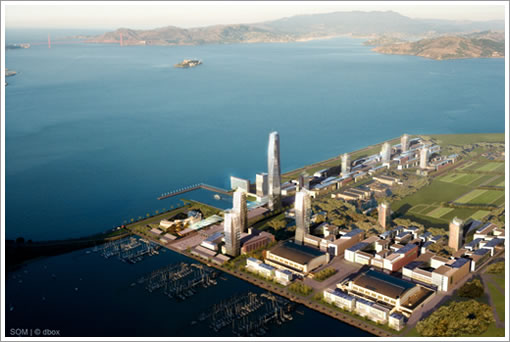Critics of current plans to build 8,000 new homes and acres of commercial and office space on Treasure Island — despite the challenge of radiological contamination and rising seas — will now have one last chance to send the project back to the drawing board before planned construction begins next year.
Citizens for a Sustainable Treasure Island, headed by Aaron Peskin and Saul Bloom, has dug deep and appealed its previous judicial denials to the California Supreme Court. “We have spent a lot of money on this case because this is extremely important,” Bloom told us. “It’s important that the city is transparent with its plans.”
Bloom and the appeal contend the the project’s approved Environment Impact Report is inadequate because it doesn’t take into account the full impacts of a project that has continued to evolve and that still doesn’t have a full fleshed out plan for dealing with transportation or other realms.
“It’s touted to be a sustainable development, but we don’t see how a 20,000-person development in the middle of a rising bay with one way on and off, plus a ferry terminal, can ever be sustainable,” said Bloom, who has also tangled with project developers Lennar Urban over its long-stalled Hunters Point Shipyard development.
Lead developer Wilson Meany didn’t immediately return Guardian calls for comment on the appeal. Just this week, a study of the site by the city, state, and US Navy found new evidence of radiological contamination on the island, a holdover from the days when it was a Navy base that housed ships used in nuclear testing in the Pacific.
“It’s ironic that on the day we appealed this case to the Supreme Court, Treasure Island Development Authority and the US Navy found more elevated levels of radiation out there, including under an occupied home,” Peskin told us.
Officials have pledged to seek more public input as details of the development plan are finalized later this year, something Bloom said should have happened before the EIR was certified, calling for it to be deemed a program EIR rather than a project EIR, which would then subject the development to further study.
While the Appeals Court ruled that deficiencies in the EIR can be dealt with in supplemental EIRs later, the group is calling on the Supreme Court to require more detailed study now before allowing the project to proceed. As Bloom told us, “Change the project EIR to a program EIR and we’ll go away happy.”

